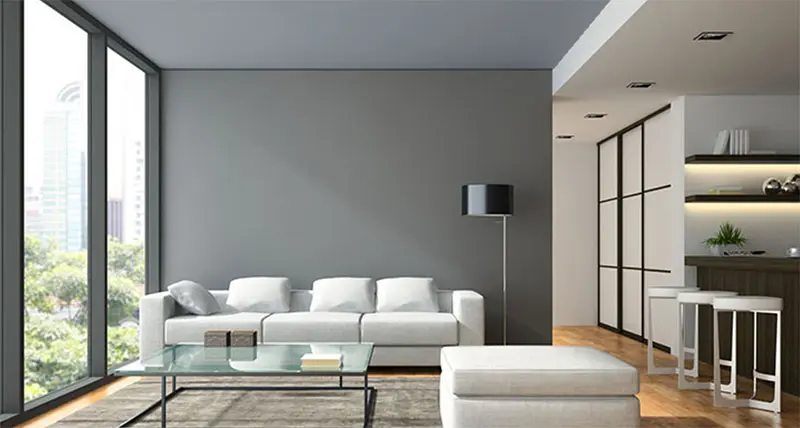Interior Home Painting. Who’s Afraid of the Dark?

At the risk of generalizing, it’s probably safe to say that the vast majority of DIY home painters make a beeline for the lighter, brighter side of the color spectrum. And for a very good reason as well, given the way in which lighter interior paint colors have the potential to make living spaces feel vibrant, lively and in some cases even bigger than they already are. Particularly in instances where there is limited space to work with therefore, lighter colors tend to be the obvious and exclusive go-to for most.
But while dark colors are often overlooked entirely, they can in fact be used to create truly incredible interiors. Of course, get to work with dark colors without sufficient forethought and you run the risk of the space in question becoming uninviting, gloomy and not particularly pleasant to spend time in. Nevertheless, explore ‘the dark side’ a little more thoughtfully and you may be surprised how effectively darker colors can be used around your home’s interiors.

So for those with an interest in exploring darker colors and in need of a little advice on how to get it right, here’s a quick rundown of a few helpful tips and important considerations to keep in mind along the way:
1. Choose the Right Interior Space
First and foremost, it’s important to consider the appropriateness of the room in question when you are deciding which color of paint to go with. Generally speaking, the strategic use of darker colors can make a room feel cozy, romantic, relaxing and luxurious. Nevertheless, darker colors are generally not recommended for use in areas of the home that are more energetic and vibrant in nature, such as the kitchen or walk-in storage rooms. Darker colors can work in most interior living spaces, it’s just that some are more compatible and suitable than others.
2. Add Some Brightness for Variety
Try to remember that there’s nothing that says you have to blanket the entire room from top to bottom in the same dark color. Quite to the contrary, just as a pop of darkness can really stand out in an otherwise bright room, the same also works in reverse. Whether it’s painting an entire wall a different color, using a different color for smaller features around the room or even positioning contrasting fixtures to work with the darker primary color, just a little bit of brightness really can go a long way.
3. Consider Textures
It’s exactly the same case with textures too, which used strategically to create visual breaks can really help you get the very most out of your darker color choices. Stripes, for example, are extremely popular and easy to work with these days, giving you the opportunity to both create texture within your primary color choices and add bursts of additional color to really set things off. Also consider any shapes or designs you may have in mind, which can likewise have a big impact on the overall finish when working with darker colors.
4. Start Small
Chances are that you may find yourself a little daunted when it comes to these kinds of sweeping changes, which is why it is a good idea to start small and see how you like things as they progress. To be honest, this is good advice to follow with absolutely every kind of painting job across the board – start things out in a small, discreet area first to find out just how things will look when the paint has been applied and has dried in place. Depending on the type, brand and quality of paint you choose, it’s worth remembering that it may look entirely different once dried on your walls than it done in/on the can.
5. One or Two Walls
One of the simplest and most effective ways of bringing a room to life using darker colors is to simply use them to paint one or two of the walls, rather than all of them. Even if it is an approach you have not yet considered, it’s still worth getting the job done completely and meticulously on one wall first, before taking a step back to see whether or not you really need to carry on with the other walls. There’s a good chance you may find that you are so delighted with the way things look right now that there really is no need to take things any further!
6. Experiment Beforehand
If you are intending to paint your walls in single colors with no real intricacies, you might want to consider experimenting with a little technology. Simply take a picture of the room, use photo-editing software to see what it will look like in a world of colors and adjust your decisions accordingly. And if you do find the exact color you want during the process, be sure to take a screen shot with you to your hardware store and request that it be made from scratch.
7. Ask the Experts
Last but not least, if you are really looking to give your interiors an overhaul but cannot figure out where or how to start, you might want to think about organizing a consultation with the professionals. The reason being that there are probably thousands of incredible colors, effects, combinations, techniques and so on that you haven’t considered because you aren’t in fact aware of their existence! So even if it’s just for a little help with the fundamental planning process, it could still be in your best interests to speak to those who know interior painting best of all.
For more information on any area of internal or external home painting, get in touch with the Homm CPS customer service team today.










